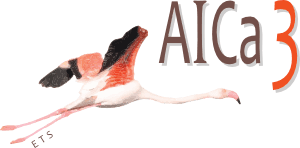Multidisciplinary approach
Essential in all forms of muscular dystrophy, after the diagnosis phase, a comprehensive care of the patient with regular periodic intervals determined by the subjective clinical needs.
If at the stage of diagnosis, the medical care figures, involved are:
- Pediatrician and General Practitioner
- Neurologist and child neuropsychiatrist
- Neuropathologist/biologist
In the later stages, however, there are many more clinical and non-clinical aspects that need to be addressed and therefore many more professionals involved:
- neurologist / child neuropsychiatrist : periodic neuromuscular evaluation, evaluation of different needs
- physiotherapist: program of maintenance of muscle lengths, patency of airways, evaluation of the needs of aids (orthosis for lower limbs, wheelchair, chairs and benches specific to work and school environments), evaluation of architectural barriers within the home and design of necessary changes
- Occupational Therapist: computer aids, electronic control systems of some aids and/or telephones and electronic devices within the home, assessment of architectural barriers within the home and design of necessary modifications
- Cardiologist and Pneumologist: periodic clinical evaluation
- Nutritionist/Dietologist: assessment of nutritional needs based on different clinical conditions
- Orthopaedist/Spine Surgeon: evaluation of any need for musculotendinous lengthening surgery in the presence of muscle retractions; vertebral arthrodesis in the presence of rapidly evolving scoliosis
- Speech therapist: assessment of chewing/swallowing patterns and assessment of any verbal expression difficulties (pneumophonic incoordination)
- Internist/endocrinologist: evaluation of possible disorders unrelated to the pathology but whose therapy could have myotoxic effect (for example drugs such as statins in case of dyslipidemia)
- Geneticist: genetic counselling to clarify one's own condition and, if necessary, that of family members and evaluation of the risk of disease in offspring
- Psychologist: accompaniment in the different stages of the disease from diagnosis to the various moments of transition (manifestation of symptoms, the onset of difficulty in moving, the need to use a wheelchair, changes in job functions and change of work activities, social integration, relationships with peers and with the partner and family members, considerations in advanced stages of the end of life)
- Social worker: practices for exemption, accompaniment; contacts with specific figures at municipal and provincial level for home care, for support, in the case of children, of figures of educator
Symptomatic" therapy
Tendon lengthening surgery for musculotendinous retraction picture
Surgical correction by vertebral arthrodesis in the case of rapidly evolving scoliosis
PHYSIOTHERAPY
The goals of phiosotherapy in calpain-deficient cingulate dystrophy3 (and generally in all slowly evolving forms of cingulate dystrophy) are essentially 3:
1) Muscle strength maintenance through low-intensity, short-duration exertion (walking for 30 minutes per day on flat surfaces, water/swimming activities for 30-40 minutes time)
2) Maintenance of residual muscular function through the use of aids such as orthotics (e.g. lightweight Codeville spring-type braces in the case of hyposthenia of the distal musculature of lower limbs for walking or use of leg-foot and foot-leg-thigh braces (position showers) to prevent musculotendinous retractions.
3) Reduce the retraction framework through stretching exercises
